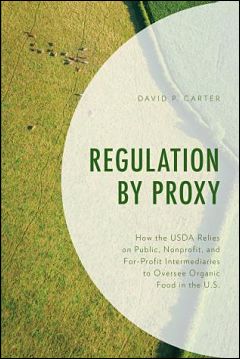The Regulator, the Target, and the Intermediary
A Comprehensive Look at the Regulation of Organic Food in the United States
DOI:
https://doi.org/10.5304/jafscd.2020.094.029
Keywords:
USDA Organic, Regulation, Organic Farming, National Organic Program, CertificationAbstract
First paragraph:
In Regulation by Proxy: How the USDA Relies on Public, Nonprofit, and For-Profit Intermediaries to Oversee Organic Food in the U.S., Dr. David P. Carter, assistant professor of political science at the University of Utah, provides a comprehensive analysis of organic food regulation in the United States. The regulation of organic food is complex, and, as the book title suggests, organic regulation involves many actors with various roles. Although the federal government, through the U.S. Department of Agriculture (USDA), plays a role in organic certification, “the regulatory arrangement is not as simple as a regulator . . . regulating an industry activity . . .” (p. 7). Instead, The National Organic Program (NOP), a regulatory entity housed under the USDA’s Agricultural Marketing Service, relies on “an assortment of ‘regulatory intermediaries’” (p. 7) independent from the NOP to develop and enforce uniform national standards for organically produced agricultural products sold in the United States. As a result, the regulation of the USDA organic standard is “decentralized” such that organic food is regulated by proxy. . . .
Metrics

Downloads
Published
How to Cite
License
Copyright (c) 2020 The Author

This work is licensed under a Creative Commons Attribution 4.0 International License.
The copyright to all content published in JAFSCD belongs to the author(s). It is licensed as CC BY 4.0. This license determines how you may reprint, copy, distribute, or otherwise share JAFSCD content.












